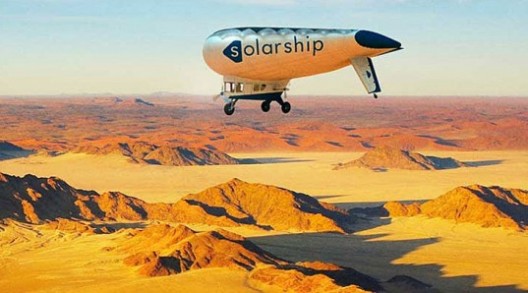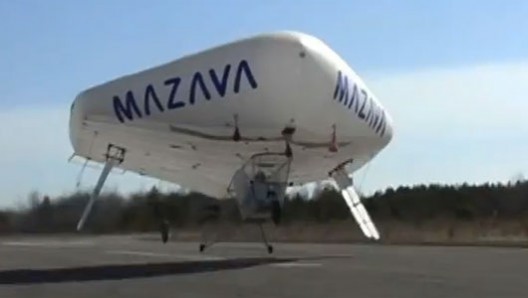A good many good ideas for aircraft seem to come from good ideas for serving mankind – with many aircraft and performance-enhancing features coming from the humanitarian or missionary world.
A particular need for jungle aviation, or bush flying anywhere, is the capability to make short takeoffs and landing s (STOL). Jungles and mountain passes often present limited options for setting down, and being able to clear trees and pinnacles can be a life-saving necessity.
Solar Ship advertises itself as an ultimate means of penetrating the wilderness. “No roads. No fuel. No infrastructure” sounds like a pipe dream, but seems to be heading toward practical reality, with test flights continuing on at least two prototypes.
http://www.youtube.com/watch?v=awAAmwpdV70
Jay Godsall, CEO and co-founder of Solar Ship, Inc. has a cutting-edge medical background, having started and run an infectious disease barcoding firm, Fio. Dr. Sebastien Fournier, Chief Innovation Officer was CTO for Fio, helping develop and patent the world’s first method of bar-coding pathogens to be used in handheld diagnostic devices for infectious disease in remote areas. Chief Operating Officer (COO), Michel Rugema, has managed USAID operations in Africa and Haiti – as well as five-star restaurants in New York, widely (and wildly) divergent worlds and fields. Chief Technical Officer John Hutchinson has 30 years’ experience manufacturing and maintaining aircraft for remote area markets and is a pioneer in the remote area power systems development. A triple-threat man, he holds an engineering degree, an MBA and a Law Degree from the University of Cape Town.
Their unique backgrounds have come together to produce a unique aircraft, part airplane, part airship. The helium filled wings will doubtless help with short-field operations, but also add the problem of managing supplies of this gas in remote regions and possibly raising the costs of operation.
Otherwise, the aircraft, which in prototype form has a Zenair fuselage lengthened to fit the wide-chord wing, a conventional, probably Rotax engine in the nose and two “outrigger” type two-stroke engines driving “pusher” propellers. Another prototype under construction seems to have two Roman Susnik motors with a large battery pack.
Ultimate plans would incorporate flexible solar cells on the broad wing surface feeding those batteries and allowing the airplane to enjoy nearly unlimited range compared to other electric aircraft. Optional hybrid systems could enable up to unlimited range in their largest conveyance.
Solar Ships would come at three levels, all named for wild creatures. Smallest, the Caracal, named for a fleet African wild cat, would carry 200 to 1,000 kilograms (440 to 2,200 pounds), and be dedicated to intelligence, surveillance, and reconnaissance tasks (ISR), although its payload would certainly allow other missions.
Mid-range, the Chui (choo-ee), Swahili for Leopard, would lift 3,000 to 15,000 kilograms (6,600 to 33,000 pounds) and be suited for ISR and cargo. Largest, the Nanuk (Polar Bear) could manage a massive payload of 20,000 to 100,000 kilograms (44,000 to 220,000 pounds) – equal to those for medium to large cargo jets, but navigating at much lower speeds. The smallest Solar Ship, for instance, travels at 70 kilometers per hour (43.4 mph) and the largest at 120 kph (74.4 mph).
With their long ranges 1,000 kilometers (620 miles) for the Caracal, 3,000 kilometers (1,860 miles) for the Chui, and unlimited distances for the Nanuk, pilots will have to tolerate ultralight aircraft speeds for extended periods.
An affiliated group, the Solar Ship Foundation, “was created to provide sustainable transport and critical cargo to remote areas that are cut off from the benefits of the global community.” Their two projects are dedicated to medicine and the environment. The Mazava Project’s goal “is to develop a series of Solar Ship aircraft able to provide isolated people with aviation transport of medical supplies and medical services.” The Savoka Project’s goal “is to develop a series of Solar Ship aircraft able to provide aviation services to people living in and around unique ecosystems supporting species-at-risk and cultures-at-risk.”
Beyond those ambitions, Solar Ships’ high payload levels, great ranges and ability to set down in 40 to 200 meters (128 to 640 feet) would be welcome in supplying disaster zones like those in the Philippines right now. Their creative design and demonstrated slow flight abilities would recommend them as heavy-duty bush aircraft – well-suited for remote areas.



Comments 1
these concepts need the support of the international community with financial and engineering input. that being said, I am very proud of the way the V-22 is being used for humanitarian missions around the world. I believed from the beginning that the V-22 osprey would be a valuable asset for special ops and other military missions but the true value would be mercy missions like what we see in the Philippines. I am proud that I had a very small part in the PA area at Bell Helicopter that produced parts for the V-22.